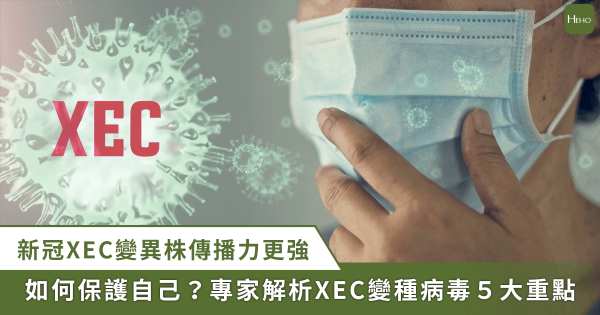As autumn and winter approach, the COVID-19 XEC variant is gradually becoming a new global public health threat. Professor Chen Hsiu-Hsi from the Institute of Epidemiology and Preventive Medicine at National Taiwan University pointed out that the XEC variant has a higher transmission rate, particularly affecting high-risk groups such as the elderly, immunocompromised individuals, and those with chronic diseases. He urges the public to stay vigilant and adhere to preventive measures such as frequent handwashing and mask-wearing. The symptoms of the XEC variant are similar to previous variants, including coughing, fatigue, headaches, muscle aches, sore throat, and diarrhea. (Image provided by Heho Health)
The symptoms of the XEC variant are similar to previous variants, including coughing, fatigue, headaches, muscle aches, sore throat, and diarrhea. (Image provided by Heho Health)
The "XEC variant" is a recombinant mutation of the KP.3.3 and KS.1.1 COVID-19 variants. Due to the T22N and FLuQE mutations, it can infect cells more easily and evade the immune system, making it more transmissible than the original Omicron variant. First detected in Germany in June, data from the World Health Organization (WHO) shows that since August, cases have been found in over 15 countries, including Germany, the UK, France, Taiwan, and the US, with Germany having the highest prevalence at 18%.
The clinical symptoms of the XEC variant are similar to the Omicron strain, with patients often experiencing fever, sore throat, cough, and fatigue. Some cases also involve loss of smell, loss of appetite, and diarrhea. Due to its high transmission rate, the XEC variant could become the dominant strain in this year's autumn and winter waves. Medical experts recommend that high-risk groups get regular vaccinations for COVID-19 and the flu to gain dual protection and reduce the risk of severe illness and hospitalization. High-risk groups must get vaccinated against COVID-19 to achieve optimal protection. (Image provided by Heho Health)
High-risk groups must get vaccinated against COVID-19 to achieve optimal protection. (Image provided by Heho Health)
Experts emphasize that preventive measures should still be followed in daily life, such as wearing masks in public places, frequent handwashing, maintaining social distancing, and staying updated on vaccination guidelines to prevent the spread of the virus and protect the health of oneself and family members.







